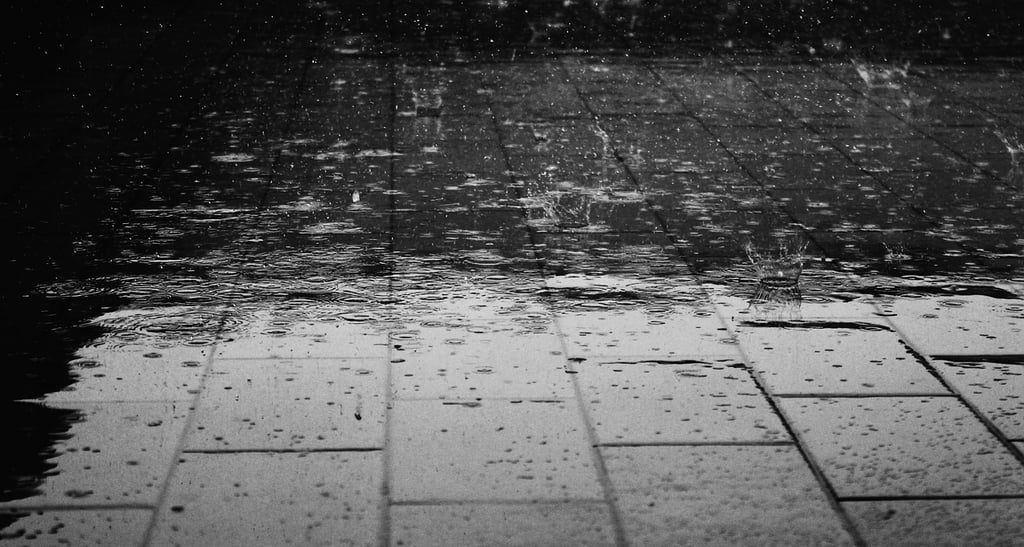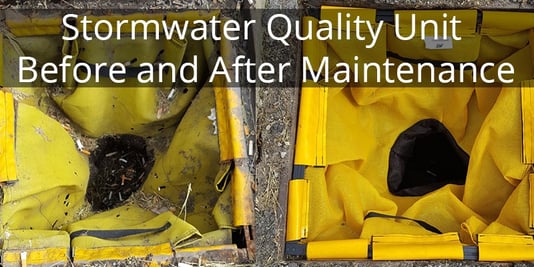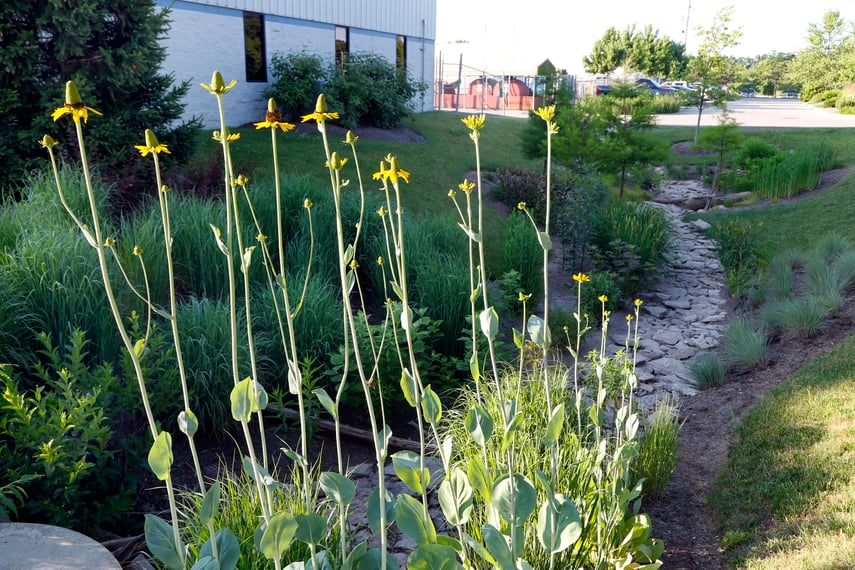When’s the last time you opened a stormwater drain on your property to see what was inside? You might be surprised at what you find. You probably expect to see some landscaping debris like grass clippings and leaves that fall into grates—and cigarette butts that fall into drains. But consider the oil and buildup from vehicle exhaust that collects on parking lots and is washed into stormwater drains.
Rainwater rolls across the surface and carries with it debris that you certainly would not want to find in Kentucky’s rivers, lakes and streams.
That’s where stormwater quality units come into play. These units are designed to filter debris from stormwater run-off and to keep harmful substances from entering our waterways.
Many people do not realize water flows into stormwater drains and directly back into nature. Eventually, we tap into those bodies of water for drinking water—then filtering it to treatment facilities so it is safe to use. What’s important to recognize is that the water that flows across parking lots is part of a cycle. The more responsible we are with filtering stormwater runoff, the better it is for our environment and our water supply.

So, what do we do about managing stormwater run-off and improving water quality? One solution is to install a stormwater quality unit—and to maintain it on a regular basis. We emphasize the importance of maintenance, because if ignored these units don’t do their job.
Let’s talk about how stormwater quality units work and how they should be maintained.
What Is A Stormwater Quality Unit?
Stormwater quality units are designed to treat stormwater by filtering sediment, debris, oils and trash that collects on surfaces and is washed into stormwater sewers. There are various types of stormwater quality units that can be installed under the grate where water enters the storm sewer. Some units are as simple as a mesh metal basket that includes a filter to trap debris, sediment, oil and other suspended solids. Other units are made from polyethylene drainage pipe. More advanced water quality filtering can include several different types of water quality units at different stages in the sewer. At Klausing Group, we frequently service stand-alone units like the one we have at our headquarters.
How Do Stormwater Quality Units Work?
Imagine mixing some grass clippings, sediment and other debris into a cup of water and pouring that into a coffee filter. The filter traps the solids and allows water to flow through. Stormwater quality units work in a similar manner, however their filters are designed to prevent harmful oil that commonly collects on hard surfaces.
Stormwater quality units include various filtering mechanisms that trap debris and sediment before water enters the storm sewer. These units often resemble a basket that sits right underneath the stormwater grate. They clip into place and can be removed for cleaning and filter changes.
Maintaining Stormwater Quality Units
Does your Kentucky property have a stormwater quality unit? Many times, property owners do not realize they exist. And, the City of Lexington Division of Water Quality inspects units to be sure they are working properly. If units are non-compliant, property owners are charged a fine. So, first step is: Find out if your stormwater sewers have water quality units already.

If your property does have stormwater quality units, are you maintaining them on at least a quarterly basis? Maintenance includes removing the filter and cleaning the basket so debris, sediment and other solids are removed. If the filter is compromised, it should be replaced.
This can happen easily. For example, cigarettes dropped down sewers can burn holes into water quality unit filters. Filters can get clogged up by debris like grass clippings and leaves if a landscape crew is not careful to blow debris away from sewers. (Be sure to talk to your landscape provider about this.) A clogged or damaged filter is ineffective.
Because stormwater quality units often go unnoticed—they are mounted under sewer grates, after all—it’s easy to forget about maintaining them. But not doing so can result in fines and a system that’s simply not doing its job. Rain gardens can also include water quality units that must be managed on a regular basis.

If your property does not have stormwater quality units, now is the time to consider this green infrastructure. There are some government incentives if you choose to invest in the units.
Do Your Part To Improve Water Quality
Stormwater quality units are a simple way to make an impact on water quality. By installing these units in storm sewers, you prevent debris, oil, sediment and trash that collects on hard surfaces from washing into our natural water sources. Remember, storm sewers are a direct route to rivers, streams and lakes. You wouldn’t pour a can of oil in a creek or dump a bag of lawn waste into a lake. That’s basically what’s happening gradually when water quality units are not in place in our storm sewers.
We can all do a small part to improve water quality and our ecosystem, and together it can make a marked impact. Consider starting small by installing and regularly maintaining stormwater quality units. By hiring a professional with knowledge of green infrastructure and how these units work, you can rest assured that they will be properly managed and in compliance.
Let’s talk about how your landscape can do more. Stormwater quality units are just one way. Call us anytime at 859.254.0762 in Lexington, or 502.264.0127 in Louisville. Or, fill out this simple contact form and we’ll get in touch with you.


